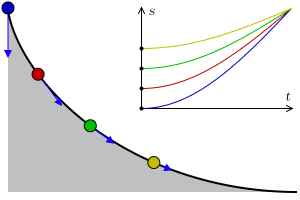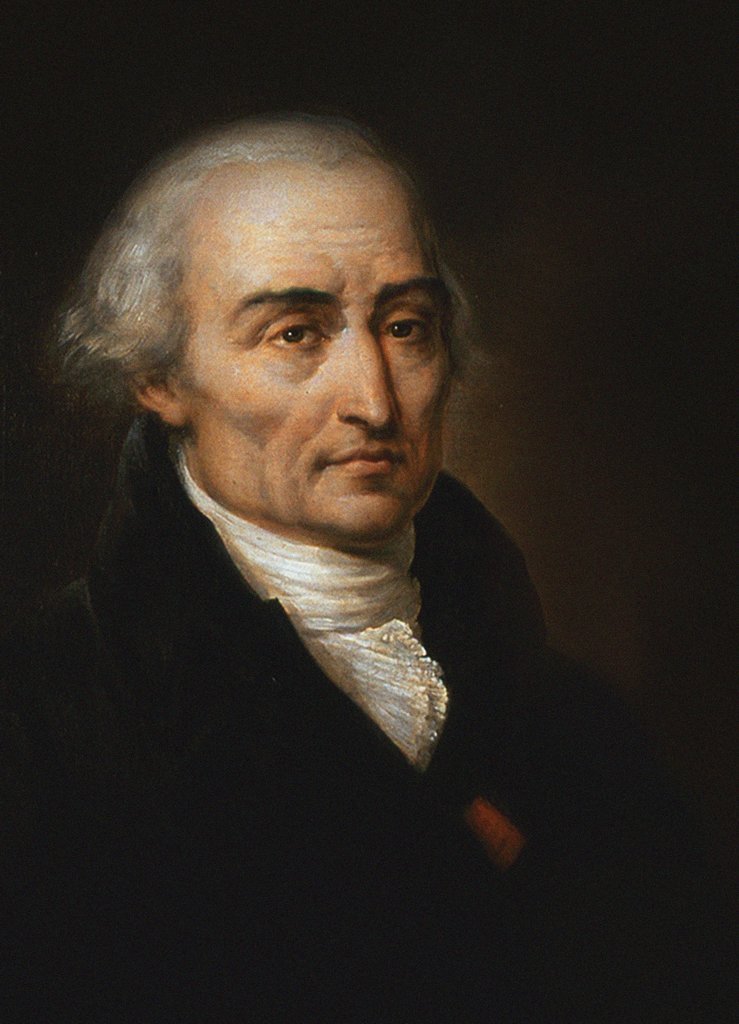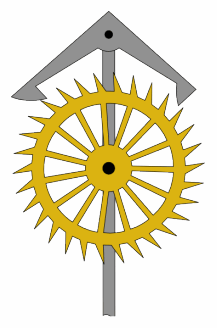|
Tautochrone Curve
A tautochrone curve or isochrone curve () is the curve for which the time taken by an object sliding without friction in uniform gravity to its lowest point is independent of its starting point on the curve. The curve is a cycloid, and the time is equal to Pi, π times the square root of the radius of the circle which generates the cycloid, over the Gravitational acceleration, acceleration of gravity. The tautochrone curve is related to the brachistochrone curve, which is also a cycloid. The tautochrone problem The tautochrone problem, the attempt to identify this curve, was solved by Christiaan Huygens in 1659. He proved geometrically in his ''Horologium Oscillatorium'', originally published in 1673, that the curve is a cycloid. The cycloid is given by a point on a circle of radius r tracing a curve as the circle rolls along the x axis, as: \begin x &= r(\theta - \sin \theta) \\ y &= r(1 - \cos \theta), \end Huygens also proved that the time of descent is equal to ... [...More Info...] [...Related Items...] OR: [Wikipedia] [Google] [Baidu] |
Gravity Of Earth
The gravity of Earth, denoted by , is the net force, net acceleration that is imparted to objects due to the combined effect of gravitation (from mass distribution within Earth) and the centrifugal force (from the Earth's rotation). It is a Euclidean vector, vector quantity, whose direction coincides with a plumb bob and strength or magnitude is given by the Euclidean norm, norm g=\, \mathit\, . In International System of Units, SI units, this acceleration is expressed in metre per second squared, metres per second squared (in symbols, metre, m/second, s2 or m·s−2) or equivalently in Newton (unit), newtons per kilogram (N/kg or N·kg−1). Near Earth's surface, the acceleration due to gravity, accurate to 2 significant figures, is . This means that, ignoring the effects of drag (physics), air resistance, the speed of an object free fall, falling freely will increase by about every second. The precise strength of Earth's gravity varies with location. The agreed-upon value for ... [...More Info...] [...Related Items...] OR: [Wikipedia] [Google] [Baidu] |
Lagrangian Mechanics
In physics, Lagrangian mechanics is a formulation of classical mechanics founded on the d'Alembert principle of virtual work. It was introduced by the Italian-French mathematician and astronomer Joseph-Louis Lagrange in his presentation to the Turin Academy of Science in 1760 culminating in his 1788 grand opus, ''Mécanique analytique''. Lagrangian mechanics describes a mechanical system as a pair consisting of a configuration space (physics), configuration space ''M'' and a smooth function L within that space called a ''Lagrangian''. For many systems, , where ''T'' and ''V'' are the Kinetic energy, kinetic and Potential energy, potential energy of the system, respectively. The stationary action principle requires that the Action (physics)#Action (functional), action functional of the system derived from ''L'' must remain at a stationary point (specifically, a Maximum and minimum, maximum, Maximum and minimum, minimum, or Saddle point, saddle point) throughout the time evoluti ... [...More Info...] [...Related Items...] OR: [Wikipedia] [Google] [Baidu] |
Arclength
Arc length is the distance between two points along a section of a curve. Development of a formulation of arc length suitable for applications to mathematics and the sciences is a problem in vector calculus and in differential geometry. In the most basic formulation of arc length for a vector valued curve (thought of as the trajectory of a particle), the arc length is obtained by integrating speed, the magnitude of the velocity vector over the curve with respect to time. Thus the length of a continuously differentiable curve (x(t),y(t)), for a\le t\le b, in the Euclidean plane is given as the integral L = \int_a^b \sqrt\,dt, (because \sqrt is the magnitude of the velocity vector (x'(t),y'(t)), i.e., the particle's speed). The defining integral of arc length does not always have a closed-form expression, and numerical integration may be used instead to obtain numerical values of arc length. Determining the length of an irregular arc segment by approximating the arc segment as ... [...More Info...] [...Related Items...] OR: [Wikipedia] [Google] [Baidu] |
Isochronous Timing
A sequence of events is isochronous if the events occur regularly, or at equal time intervals. The term ''isochronous'' is used in several technical contexts, but usually refers to the primary subject maintaining a constant period or interval (the reciprocal of frequency), despite variations in other measurable factors in the same system. Isochronous timing is a characteristic of a repeating event whereas synchronous timing refers to the relationship between two or more events. *In dynamical systems theory, an oscillator is called ''isochronous'' if its frequency is independent of its amplitude. *In horology, a mechanical clock or watch is ''isochronous'' if it runs at the same rate regardless of changes in its drive force, so that it keeps correct time as its mainspring unwinds or chain length varies. Isochrony is important in timekeeping devices. Simply put, if a power providing device (e.g. a spring or weight) provides constant torque to the wheel train, it will be isochronou ... [...More Info...] [...Related Items...] OR: [Wikipedia] [Google] [Baidu] |
Simple Harmonic Motion
In mechanics and physics, simple harmonic motion (sometimes abbreviated as ) is a special type of periodic motion an object experiences by means of a restoring force whose magnitude is directly proportional to the distance of the object from an equilibrium position and acts towards the equilibrium position. It results in an oscillation that is described by a sinusoid which continues indefinitely (if uninhibited by friction or any other dissipation of energy). Simple harmonic motion can serve as a mathematical model for a variety of motions, but is typified by the oscillation of a mass on a spring when it is subject to the linear elastic restoring force given by Hooke's law. The motion is sinusoidal in time and demonstrates a single resonant frequency. Other phenomena can be modeled by simple harmonic motion, including the motion of a simple pendulum, although for it to be an accurate model, the net force on the object at the end of the pendulum must be proportional to the dis ... [...More Info...] [...Related Items...] OR: [Wikipedia] [Google] [Baidu] |
Leonhard Euler
Leonhard Euler ( ; ; ; 15 April 170718 September 1783) was a Swiss polymath who was active as a mathematician, physicist, astronomer, logician, geographer, and engineer. He founded the studies of graph theory and topology and made influential discoveries in many other branches of mathematics, such as analytic number theory, complex analysis, and infinitesimal calculus. He also introduced much of modern mathematical terminology and Mathematical notation, notation, including the notion of a mathematical function. He is known for his work in mechanics, fluid dynamics, optics, astronomy, and music theory. Euler has been called a "universal genius" who "was fully equipped with almost unlimited powers of imagination, intellectual gifts and extraordinary memory". He spent most of his adult life in Saint Petersburg, Russia, and in Berlin, then the capital of Kingdom of Prussia, Prussia. Euler is credited for popularizing the Greek letter \pi (lowercase Pi (letter), pi) to denote Pi, th ... [...More Info...] [...Related Items...] OR: [Wikipedia] [Google] [Baidu] |
Joseph Louis Lagrange
Joseph-Louis Lagrange (born Giuseppe Luigi LagrangiaJoseph-Louis Lagrange, comte de l’Empire ''Encyclopædia Britannica'' or Giuseppe Ludovico De la Grange Tournier; 25 January 1736 – 10 April 1813), also reported as Giuseppe Luigi Lagrange or Lagrangia, was an Italian and naturalized French , physicist and astronomer. He made significa ... [...More Info...] [...Related Items...] OR: [Wikipedia] [Google] [Baidu] |
Escapement
An escapement is a mechanical linkage in mechanical watches and clocks that gives impulses to the timekeeping element and periodically releases the gear train to move forward, advancing the clock's hands. The impulse action transfers energy to the clock's timekeeping element (usually a pendulum or balance wheel) to replace the energy lost to friction during its cycle and keep the timekeeper oscillating. The escapement is driven by force from a coiled spring (device), spring or a suspended weight, transmitted through the timepiece's gear train. Each swing of the pendulum or balance wheel releases a tooth of the escapement's ''escape wheel'', allowing the clock's gear train to advance or "escape" by a fixed amount. This regular periodic advancement moves the clock's hands forward at a steady rate. At the same time, the tooth gives the timekeeping element a push, before another tooth catches on the escapement's pallet, returning the escapement to its "locked" state. The sudden stoppi ... [...More Info...] [...Related Items...] OR: [Wikipedia] [Google] [Baidu] |
Pendulum Clock
A pendulum clock is a clock that uses a pendulum, a swinging weight, as its timekeeping element. The advantage of a pendulum for timekeeping is that it is an approximate harmonic oscillator: It swings back and forth in a precise time interval dependent on its length, and resists swinging at other rates. From its invention in 1656 by Christiaan Huygens, inspired by Galileo Galilei, until the 1930s, the pendulum clock was the world's most precise timekeeper, accounting for its widespread use. Throughout the 18th and 19th centuries, pendulum clocks in homes, factories, offices, and railroad stations served as primary time standards for scheduling daily life, work shifts, and public transportation. Their greater accuracy allowed for the faster pace of life which was necessary for the Industrial Revolution. The home pendulum clock was replaced by less-expensive synchronous electric clocks in the 1930s and 1940s. Pendulum clocks are now kept mostly for their Interior decor, decorative ... [...More Info...] [...Related Items...] OR: [Wikipedia] [Google] [Baidu] |
Isochronous
A sequence of events is isochronous if the events occur regularly, or at equal time intervals. The term ''isochronous'' is used in several technical contexts, but usually refers to the primary subject maintaining a constant period or interval (the reciprocal of frequency), despite variations in other measurable factors in the same system. Isochronous timing is a characteristic of a repeating event whereas synchronous timing refers to the relationship between two or more events. *In dynamical systems theory, an oscillator is called ''isochronous'' if its frequency is independent of its amplitude. *In horology, a mechanical clock or watch is ''isochronous'' if it runs at the same rate regardless of changes in its drive force, so that it keeps correct time as its mainspring unwinds or chain length varies. Isochrony is important in timekeeping devices. Simply put, if a power providing device (e.g. a spring or weight) provides constant torque to the wheel train, it will be ... [...More Info...] [...Related Items...] OR: [Wikipedia] [Google] [Baidu] |







